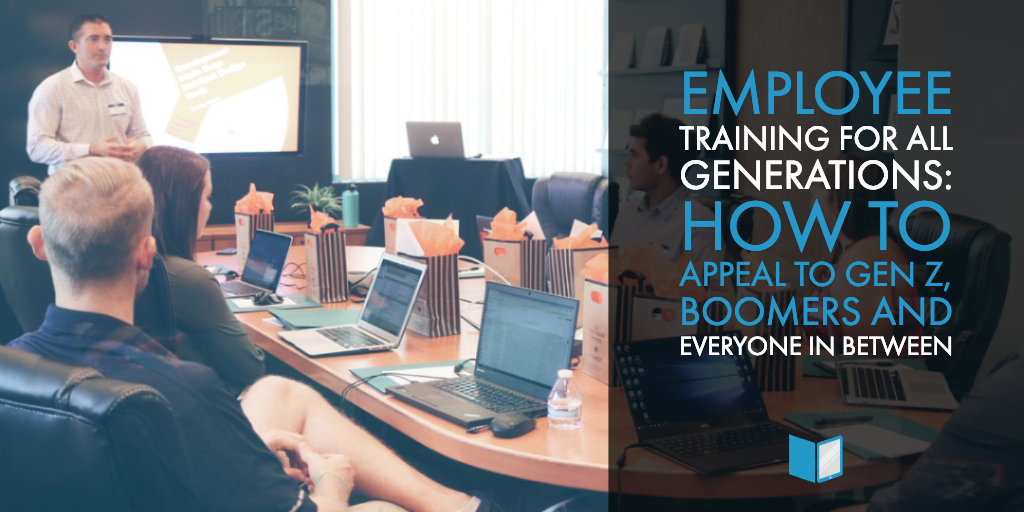As you’re creating your employee course content and trying to tick all the necessary boxes, you might find yourself training staff of different generations - from veteran salespeople to summer interns. When you’re creating eLearning content for your workforce there are effective ways to seamlessly bridge the generational gaps to make the information relevant, engaging and easy to retain without skewing too far in one direction or the other.
In fact, the content itself shouldn’t change at all! At the end of the day, every employee doing the same job needs to know the same information, whether it’s about your products or processes. The delivery methods, however, are likely to differ.Take a look at how to design your employee eLearning content in a way that appeals to different generations.
Generation Z
When you’re working with the fresh-out-of-college (or maybe even still in college) demographic, their needs for obtaining information are going to be much different than their more veteran counterparts.
The oldest members of Generation Z - which Pew Research defines as anyone born between 1997 and 2012 - are roughly 22 years old and just now graduating college. They were practically born with a mobile device in hand. This means they’re much more accustomed to quickly swiping and scrolling through screens. Not only are they used to being connected to the Internet on a near constant basis - they expect it. Like their Millennial counterparts, they thrive off being able to access data anytime, anywhere. There is no “wondering” about something - if they have a question, they’ll instantly search for the answer, as the vast knowledge of the Internet has always been at their fingertips.
The takeaway: mobile-responsive and offline-accessible content is key with this group.
Baby Boomers
On the other end of the workforce spectrum are the Baby Boomers, the parents of the much-discussed Gen Xers and Millennials and - likely - the grandparents of Generation Z.
These folks have adapted to the technological world. The youngest Boomers were born in the mid-1960s and it's likely that throughout their careers they were, by force or by choice, early adopters of technology. It’s also likely that the eldest of this generation left the workforce in the early 2000s, before mobile technology as a must-have really took hold. This demographic definitely comprises your veteran workers, and while they may have adapted to technology they aren’t necessarily eating, sleeping, and breathing it the way your youngest employees are.
The takeaway: they've seen it all, and have all adapted their own personal preferences when it comes to learning styles, so it's best to provide a little of everything for these learners; written, visual, audible and activity-based training, with options for printed materials to supplement the digital.
Bridging Generations Boom - Z
So, how do you create eLearning courses and content that hits on the needs of these two vastly different demographics - and everyone in between?
The key is often in the design. As we mentioned, your content - the facts and knowledge you’re working to impart - remains the same and you aren’t going to need to adopt a specific vernacular for each demographic. You will, however, need to create modules and designs that work for everyone.
Legibility and Readability
In this situation (and likely other situations you’ve come across in your personal and professional lives), one of your first considerations should be to cater to the most common denominator. For example, if you’re planning on creating visual modules that have snippets of information that need to be read along with quizzes that need to be answered, make sure everything is easy to read. We don’t mean using simple language or “dumbing it down” (although do try to simplify overly complex language, if possible).
We just mean make it legible. Choose fonts and space that make things visually pleasing. All generations will agree that using small, squished, swirly fonts will make text difficult to read. Just keep in mind that your younger generation may be accessing the content via their mobile phones, and your older generation may be reading the content with eyesight that isn’t as strong as it used to be, as presbyopia is due to impact each and every one of us at or around the age of 40.
Navigate Without a GPS
You’ll also want to make sure that your content navigation is as user friendly as possible. Regardless of generational age, even tech savvy people can be thrown off and lose time and productivity all thanks to an unintuitive user interface (UI) that seems to require its own training course. Consider these tips:
- Provide clear instructions.
- Make it easy to navigate to the previous or next item in the module using large buttons.
- Make it visually clear that drop-downs needs to be clicked or swipeable elements can be swiped.
These are just a few quick and easy things you can do to create impactful training courses for your entire workforce or organization. Are you ready to learn more? Get in touch with a member of our team today.






Leave a comment